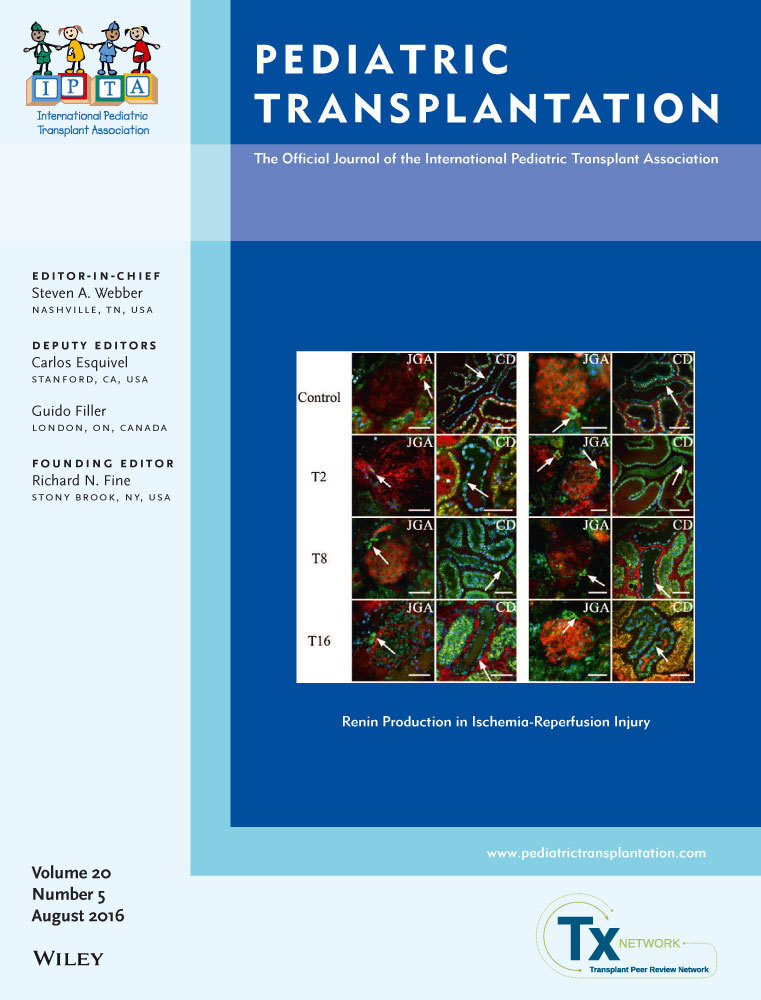Outcomes after discontinuation of routine use of transanastomotic biliary stents in pediatric liver transplantation at a single site
Abstract
Routine use of transanastomotic biliary stents (RTBS) for biliary reconstruction in liver transplantation (LT) is controversial, with conflicting outcomes in adult randomized trials. Pediatric literature contains limited data. This study is a retrospective review of 99 patients who underwent first LT (2005–2014). In 2011, RTBS was discontinued at our center. This study describes biliary complications following LT with and without RTBS. 56 (56%) patients had RTBS. Median age at LT was 1.9 yr (IQR 0.7, 8.6); 55% were female. Most common indication for LT was biliary atresia (36%). Most common biliary reconstruction was Roux-en-Y choledochojejunostomy (75% with RTBS, 58% without RTBS, p = 0.09). Biliary complications (strictures, bile leaks, surgical revision) occurred in 23% without significant difference between groups (20% with RTBS, 28% without RTBS, p = 0.33). Patients with RTBS had routine cholangiography via the tube at 6–8 wk; thus, significantly more patients with RTBS had cholangiograms (91% vs. 19%, p < 0.0001). There was no difference in the number of patients who required therapeutic intervention via endoscopic or percutaneous transhepatic cholangiography (11% with RTBS, 19% no RTBS, p = 0.26). Routine use of RTBS for biliary reconstruction in pediatric LT may not be necessary, and possibly associated with need for costlier, invasive imaging without improvement in outcomes.




